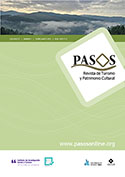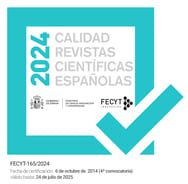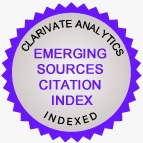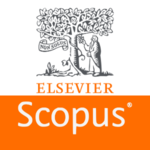From no shame to shameless: case study between client-hotelier in tourist-apartments
DOI:
https://doi.org/10.25145/j.pasos.2025.23.007Keywords:
shame, shameless, hospitality, benefits, ethical valuesAbstract
Relationships between members of a social/cultural group have been a topic of study for decades, with shame being one main feeling generated from non-compliance with previously established norms, which may vary from one society and generation to another. Due to a fall in ethical values, the culture of complaints and the exchange of opinions, shame seems to have been diluted in several industries, especially hospitality, and therefore it has generated benefits for the client and negative feelings for the hotelier. The aim of this study was to analyse the close relationship between having no shame and calling someone shameless. The research instrument used for data collection was a questionnaire based on the Likert-scale with 5 response possibilities in relation to the hypotheses of this study and questions sent to a Whatsapp group. Through the method based on the structural equation model (SEM-PLS), a total of 116 responses from hoteliers were collected. The results revealed that not being ashamed to request extra services benefits guests, however it generates a negative word among hoteliers when referring to guests.
Downloads
Publication Facts
Reviewer profiles N/A
Author statements
- Academic society
- PASOS. Revista de Turismo y Patrimonio Cultural
- Publisher
- Instituto Universitario de Investigación Social y Turismo. Universidad de La Laguna (España) - Instituto Universitario da Maia ISMAI (Portugal)
References
Ahmed, S. (2015). La vergüenza ante los demás. En S. Ahmed, La política cultural de las emociones. México. Unam. https://www.puees.unam.mx/curso2021/materiales/Sesion14/Ahmed2015_LaPoliticaCulturalDeLasEmociones.pdf
Ali, F. (2016). Hotel website quality, perceived flow, customer satisfaction and purchase intention. Journal of Hospitality and Tourism Technology, 7(2), 213–228. https://doi.org/10.1108/JHTT-02-2016-0010
Baloglu, S.,& McCleary, K.W. (1999). US International pleasure travelers´ images of four Mediterranean destinations: A comparison of visitors and non-visitors. Journal of Travel Research, 38(2), 144–152. https://doi.org/10.1177/004728759903800207
Baltes, P.B., Linderberger, U.,& Staudinger, U.M. (1999). Lifespan Psychology:
Theory and application to intellectual functioning. Annual Rev Psychology,
, 471–507. https://doi.org/10.1146/annurev.psych.50.1.471
Bastiaansen, M., Lub, X., Mitas, O., Jung, T., Ascenção, M.P., Han, D., Moilanen, T., Smit, B.,& Strijbosch, W. (2019). Emotions as core building blocks of an experience. International Journal of Contemporary Hospitality Management, 31(2), 651–668. https://doi.org/10.1108/IJCHM-11-2017-0761
Bentler, P.M.,& Bonnet, D.G. (1980). Significance tests and goodness-of-fit in the analysis of covariance structures. Psychological Bulletin, 88, 588–606. https://doi.org/10.1037/0033-2909.88.3.588
Bigné, E., Chumpitaz, R., Andreu, L.,& Swaen, V. (2005). Percepción de la responsabilidad social corporativa: un análisis cross-cultural. UCJC Business and Society Review 1(5). https://journals.ucjc.edu/ubr/article/view/516
Brown, B. (2007). I Thought It Was Just Me (but it isn't): Making the Journey from "What Will People Think?" to "I Am Enough". Avery.
Camargo, L.O.L. (2015). Os interstícios da hospitalidade. Revista Hospitalidade, 12(especial), 42–69. http://www.spell.org.br/documentos/ver/35195/os-intersticios-da-hospitalidade-/i/pt-br
Camisón, C., Navarro, M.,& López, A. (2009). Sistemas de gestión de la calidad y desempeño: importancia de las prácticas de gestión del conocimiento y de I+D. Revista Europea de Dirección y Economía de la Empresa, 18(1), 123–134. http://hdl.handle.net/10234/33356
Carmines, E.G.,& Zeller, R.A. (1979). Reliability and validity assessment (Vol. 17). California: SAGE Publications.
Chen, Y.,& Tussyadiah, I. (2021). Service failure in peer-to-peer accommodation. Annals of Tourism Research, Elsevier, 88(C). https://doi.org/10.1016/j.annals.2021.103156
Chin, W. W. (1998). The partial least squares approach to structural equation modeling. Modern Methods for Business Research, 295(2), pp. 295–336. https://psycnet.apa.org/record/1998-07269-010
Chung, H. (2012). Measuring Flexicurity: Precautionary Notes, a New Framework, and an Empirical Example. Social Indicators Research, 106(1), 153–171. https://doi.org/10.1007/s11205-011-9800-2
Creswell, J.W.,& Creswell, J.D. (2018) Research Design: Qualitative, Quantitative, and Mixed Methods Approaches. Sage, Los Angeles.
Crompton, J.L. (1979). Motivations for pleasure vacation. Annals of Tourism Research, 6(4), 408–424.
https://doi.org/10.1016/0160-7383(79)90004-5
Cruz, I.,& Galán, J. (2019). Determinantes del comportamiento del consumidor en México. Acta Universitaria, 29(1), 1–17. https://doi.org/10.15174au.2019.2076
Dahnil, M.I, Kamarul, M., Langgat, J.,& Fabeil, N. (2014). Factors influencing SMEs adoption of social media marketing. Procedia - Social and Behavioral Sciences, 148, 119–126.
https://doi.org/10.1016/j.sbspro.2014.07.025
Del Bosque, I.R.,& Martin, H.S. (2008). Tourist satisfaction a cognitive-affective model. Annals of Tourism Research, 35(2), 551–573.http://dx.doi.org/10.1016/j.annals.2008.02.006
Dunlap, R.E., Van Lieres, K.D., Mertig, A.G.,& Jones, R.E. (2000). Measuring endorsement of the new ecological Paradigm: a revisited neP. Journal of Social Issues, 56(3), 425–442. https://doi.org/10.1111/0022-4537.00176
Flores, C. (2019). Gestionar óptimamente las reclamaciones para alcanzar la satisfacción del cliente. Aenor. Revista de la evaluación de la conformidad, (344), 23-27.https://revista.aenor.com/downloads/re-
vistas/344.pdf?output=52e58a93ecacb373f202592e64b1822e
Fornell, C.G., & Bookstein, F. L. (1982). Two structural equation models: LISREL and PLS
applied to consumer exit-voice theory. Journal of Marketing Research, 19(4), 440–452.
Gerhards, J. (1986). Georg Simmel’s contribution to a theory of emotions. Social Science Information 25(4), 901–924. https://doi.org/10.1177/053901886025004007
Goss, K., Gilbert, P., & Allan, S. (Eds.). (1994). Shame: Interpersonal Behavior, Psychopathology, and Culture. Oxford University Press.
Hair, J. F., Howard, M. C., & Nitzl, C. (2020). Assessing measurement model quality in PLS-SEM
using confirmatory composite analysis. Journal of Business Research, 109, 101–110. https://doi.org/10.1016/j.jbusres.2019.11.069
Henseler, J. (2021). Composite-based structural equation modeling: Analyzing latent and emergent
variables. New York: Guilford Press.
Hsiao, K.L., Huang, T.C., Chen, M.Y.,& Chiang, N.T. (2018). Understanding the behavioral intention to play Austronesian learning games: from the perspectives of learning outcome, service quality, and hedonic value. Interactive Learning Environments, 26(3), 372–385. https://discovery.dundee.ac.uk/ws/portalfiles/portal/51952060/scoping_review.pdf
Kincl, T.,& Štrach, P. (2018). Gender differences in online customer satisfaction: the asymmetric and nonlinear effect. Services Marketing Quarterly,39(3), 157–174.https://doi.org/10.1080/15332969.2018.1471954
Nathanson, D. L. (1987). The many faces of shame. Guilford Press.
Nepstad, S. (2004). Convictions of the Soul. New York: Oxford Univ. Press.
Nunberg, G. (2018). The social life of slurs. En D.Fogal, D.W. Harris y M. Moss, (Eds.),New work on speech acts (pp. 237–295). Oxford University Press. https://doi.org/10.1093/oso/9780198738831.003.0010
Orlando, E.,& Saab, A. (2019). Términos peyorativos de grupo, estereotipos y actos de habla. Crítica. Revista Hispanoamericana de Filosofía, 51(153). https://doi.org/10.22201/iifs.18704905e.2019.1147
Prahalad, C.K.,& Ramaswamy, V. (2004). Co-Creating Unique Value With Customers. Strategy & Leadership. 32, 4–9. https://doi.org/10.1108/10878570410699249.
Quan, S.,& Wang, N. (2004). Towards a structural model of the tourist experience: An illustration from food experiences in tourism. Tourism Management, 25(3), 297–305. https://doi.org/10.1016/S0261-5177(03)00130-4.
Real academia española (s.f.). Sinvergüenza. En el Diccionario Rae. https://dle.rae.es/sinverg%C3%BCenza
Ryu, K., Han, H.,& Jang, S. (2010). Relationships among hedonic and utilitarian values, satisfaction and behavioral intentions in the fast-casual restaurant industry. International Journal of Contemporary Hospitality Management, 22(3), 416–432. https://doi.org/10.1108/09596111011035981
Sabido Ramos, O. (2019). El análisis sociológico de la vergüenza en Georg Simmel. Una propuesta para pensar el carácter performativo y relacional de las emociones”. Digithum 23(1), 1–15. https://doi.org/10.7238/d.v0i23.3148
Sánchez González, M.G. (2021). Tesis doctoral "La música como vehículo de formación ética en los jóvenes". Universidad de Extremadura. http://hdl.handle.net/10662/12659
Sans, A.A.,& Domínguez Quaglieri, A. (2016). Unravelling Airbnb: Urban perspectives from Barcelona. Reinventing the Local in Tourism: Producing, Consuming and Negotiating Place. Channel View Publications, 209–228. https://doi.org/10.21832/9781845415709-015
Sarstedt, M., Hair, J.F., Ringle, C.M., Thiele, K.O.,& Gudergan, S.P. (2016). Estimation issues
with PLS and CBSEM: Where the bias lies! Journal of Business Research, 69(10), 3998–4010. https://doi.org/10.1016/j.jbusres.2016.06.007
Scheff, T. (1990). Shame and conformity: The deference-emotion system: En Microsociology. Discourse, Emotion, and Social Structure, 71-95. Chicago: The University of Chicago Press.
Schwartz, S.H.,& Howard, J.A. (1981). A normative decision-making model of altruism. In J.P. Rushton & R.M. Sorrentino, Eds., Altruism and Helping Behavior: Social, Personality, and Developmental Perspectives, 189–211. Lawrence Erlbaum.
Seebach, S. (2017). Love and Society: Special Social Forms and the Master Emotion. Nueva York/Londres: Routledge.
Sepúlveda, C., González, J.,& Gallego, J. (2019). Dinámica del bienestar social en Bogotá y su región. Universidad del Rosario. https://doi.org/10.12804/cc9789587843620
Sheldon, K., Turban, D., Brown, K., Barrick, M.,& Judge, T. (2003). Applying self-determination theory to organizational research. Research in Personnel and Human Resources Management, 22, 357–393. https://doi.org/10.1016/S0742-7301(03)22008-9
Simmel, G., Vernik, E.,& Ackermann Pilári, Al. (2018). Cuestiones fundamentales de sociología. Editorial Gedisa.
Singh, A.,& Vigneswara, I. (2019). Predicting consumer’s complaint behavior in telecom services: an empirical study of India, Sri Lanka and Bangladesh. En S. Satapathy y A. Joshi (eds.) Information and Communication Technology for Intelligent Systems. Smart Innovations, Systems and Tecnologies,465–472, Singapur: Springer.
Sosa, D. (2018). Introduction. En Sosa D. (Ed.). Bad Words. Philosophical Perspectives On Slurs, 1–5. Oxford: Oxford University Press. https://doi.org/10.1093/oso/9780198758655.001.0001
Štefko, R., Dorcak, P.,& Pollak, F. (2011). Shopping on the internet from the point of view of customers. Polish Journal of Management Studies, 4(1), 214–222.
Sthapit, E., Björk, P., Coudounaris, D.N.,& Stone, M.J. (2022). A new conceptual framework for memorable Airbnb experiences: guests’ perspectives. International Journal of Culture, Tourism and Hospitality Research, 16(1), 75–86. https://doi.org/10.1108/IJCTHR-01-2021-0002
Stone, M. (1974). Cross-validatory choice and assessment of statistical predictions. J. R. Stat. Soc. Ser. B 36, 111-133. https://doi.org/10.1111/j.2517-6161.1974.tb00994.x
Sturienė, U. (2019). Internet marketing tools. Vilnius University Open Series, 2, 67–74. https://doi.org/10.15388/OpenSeries.2019.18406
Tangney, J. P., & Dearing, R. L. (2003). Shame and Guilt. Guilford Press.
Thompson, R.J., Payne, S.C.,& Taylor, A.B. (2015). Applicant attraction to flexible work arrangements: Separating the influence of flextime and flexplace. Journal of Occupational and Organizational Psychology, 88(4), 726–749. https://doi.org/10.1111/joop.12095
Van Riel, C.B.M.,& Fombrun, C.J. (2007). Essentials of corporate communication: Implementing practices for effective reputation management (1st ed.). Routledge. https://doi.org/10.4324/9780203390931
Wahyuni, N., Wardana, I., Yasa, N.,& Sukaatmadja, P. (2020). The effect of culture dimension in digitalization era on the complaint behavior in hotel industry. International journal of Data and Network Science, 4(4), 347–356. https://doi.org/10.5267/j.ijdns.2020.9.004
Wong, K.K.K. (2013). Partial least squares structural equation modeling (PLS-SEM) techniques using SmartPLS. Marketing Bulletin, 24(1), pp.1–32.
Xie, K.,& Zhang, Z. (2014). The business value of online consumer reviews and management response to hotel performance. International Journal of Hospitality Management, 43, 1–12. https://doi.org/10.1016/j.ijhm.2014.07.007
Yin, S.,& Kaynak, O. (2015). Big Data for modern industry: Challenges and trends [Point of View] Proceedings of the IEEE, 203(2), 143–146. https://doi.org/10.1109/JPROC.2015.2388958
Downloads
Published
How to Cite
Issue
Section
License
Copyright (c) 2024 María Gemma Sánchez González

This work is licensed under a Creative Commons Attribution-NonCommercial-NoDerivatives 4.0 International License.
I confirm that the work is original (of my/our authorship), and that it will not be submitted to other journals or publications until the final resolution of the review process in PASOS, RTPC.
I authorize the publication of my work by PASOS, PSTN of free and open access in any of the formats that I deem appropriate, for an indefinite period of time and as a non-remunerated collaboration.
Likewise, the author(s) understands that the published work may be linked or deposited on any server or included in other publications (republication), provided that the new place and/or new edition references the original publication and acknowledges the authorship and copyright ownership of PASOS RTPC publications.
Authors understand that a plagiarism-self-plagiarism check will be performed, and the article may be removed at any time from the editorial flow.










